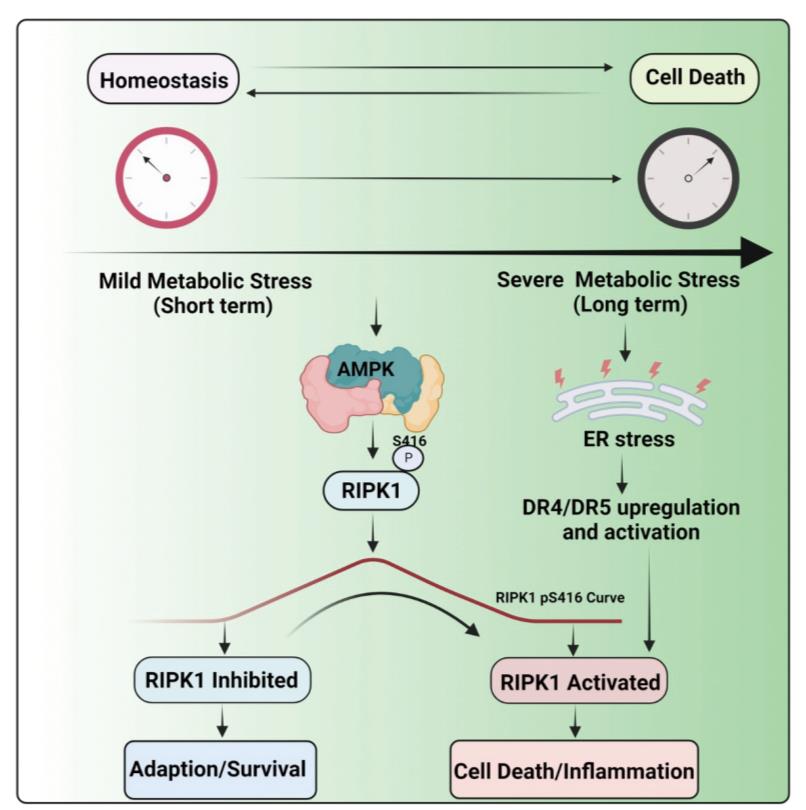AMP-activated protein kinase (AMPK) is a highly conserved sensor of cellular nutrient status and regulator of energy homeostasis in eukaryotes. In response to energy stress, AMPK is activated to restore metabolic homeostasis through acute regulation of metabolic enzymes and inhibition of ATP-consuming anabolic process. However, when extensive metabolic stress overrides AMPK-mediated adaptation, cells will activate cell death mechanisms. The mechanisms by which AMPK modulates cell survival under metabolic stress is not fully understood. Recently, a research paper titled “Metabolic orchestration of cell death by AMPK-mediated phosphorylation of RIPK1” published on Science by scientists from Interdisciplinary Research Center on Biology and Chemistry, Shanghai Institute of Organic Chemistry, Chinese Academy of Sciences, and scientists from Harvard Medical School, provided an answer to this question. In this paper, scientists establish a model in which a phosphorylation-regulated switch in RIPK1 activity enables cellular metabolic control of cell death in response to metabolic stress. This work illustrates a delicate and temporal cellular response of RIPK1 to metabolic stress (Figure. 1): cells activate AMPK to suppress RIPK1 activation, allowing survival in the short-term of energy stress, whereas over longer times as the AMPK phosphorylation of RIPK1 is lost, the inhibition is relieved, promoting a switch to activated RIPK1-mediated cell death. Thus, phosphorylation of RIPK1 by AMPK serves as a physiological brake to repress RIPK1 enzymatic activity. This work expands our understanding of the interplay between metabolism and cell death regulation, which will inform the development of therapeutical drugs aimed at preventing ischemia-induced cell death and tissue damage. 
Figure. 1. Mechanistic insights into the metabolic stress-induced cell death (Image by ZHANG Tao and XU Daichao) Prof. XU Daichao, Prof. YUAN Junying and Prof. PAN Lifeng, from Shanghai Institute of Organic Chemistry, Prof. WEI Wenyi from Harvard Medical School, and Prof. Shaw Reuben J. from The Salk Institute are the co-corresponding authors of this paper. Dr. ZHANG Tao and Dr. LV Mingming from WEI’s group, and Dr. Trefts Elijah from Shaw’s group are the co-first authors of this paper. This work was supported by grants from the National Key R&D Program of China, the Strategic Priority Research Program of the Chinese Academy of Sciences, and the National Natural Science Foundation of China. XU Daichao Ph.D.Professor Interdisciplinary Research Center on Biology and Chemistry, Shanghai Institute of Organic Chemistry, Chinese Academy of Sciences Haike Road 100 Shanghai 201210 China Tel: 0086-21-68582337 Email: xidaichao@sioc.ac.cn |


